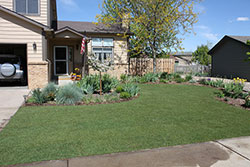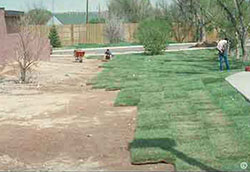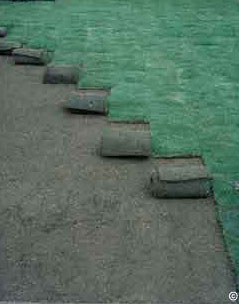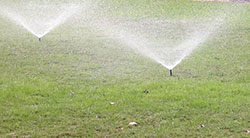When should I install sod?

You can install sod throughout the growing season, anytime good quality sod is available, and you have prepared the soil to help roots become established as quickly as possible. Roots should be well established before freezing temperatures in the fall.
What should I do before I install sod?

Before installing sod, remove debris and make any permanent grade changes, directing drainage away from building foundations. If soil is compacted, cultivate soil to a depth of 12 inches. Avoid tilling when soil is too wet and might form clods. Over-cultivation can be just as detrimental as soil that has been under-prepared.
What should I do to my soil before installing sod?

A basic soil test will help determine fertility requirements. Most soils benefit from the addition of three to five cubic yards of decomposed manure, compost or sphagnum peat moss per 1,000 square-foot area. Spread the organic matter over the soil and till it into the top six to eight inches. Remove large stones or clods that surface during tilling and level until the surface is smooth and firm. At this point, you can install an underground sprinkler system. You can also replace and settle the soil by watering and adding soil before installing sod.
Moisten soil six to eight inches deep several days before sod arrives. Soil should be slightly moist when transplanting sod, but not wet enough to severely compact it.
How often should I water my new sod?

Water your newly sodded lawn frequently enough to keep thesod and underlying soil moist, not soggy. Sod should be well rooted into the soil below within two to three weeks. Tug on it gently to determine if it’s well rooted. Once established, water less frequently, but increase the quantity of water applied to promote deeper rooting.
For more information, see the following Planttalk Colorado™ script(s).
YouTube Video
For more information, see the following Colorado State Extension fact sheet(s).



